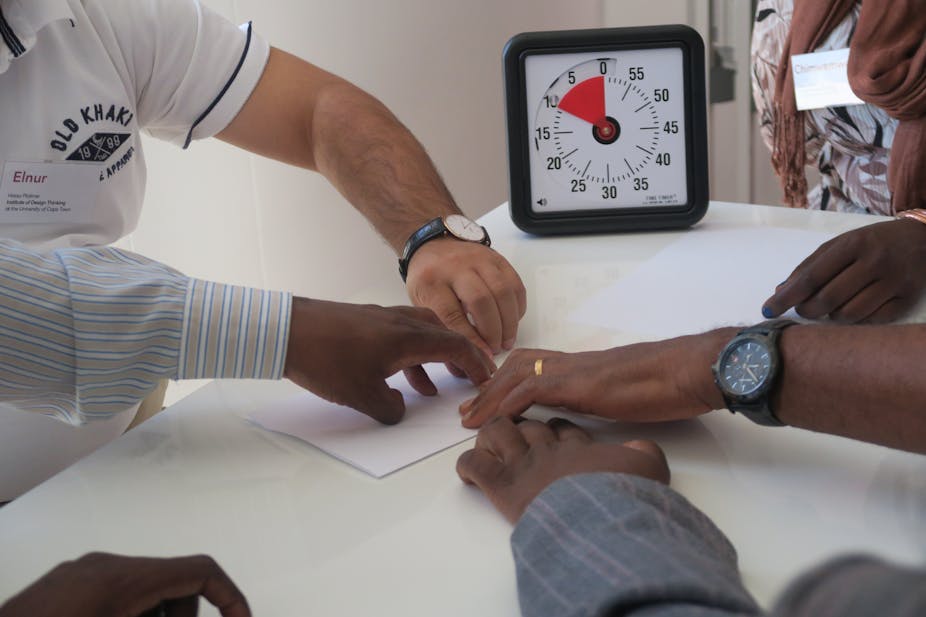Empathy is one of the most important skills any leader can have. A huge 2015 research project across 38 countries found that empathy makes leaders more effective and their businesses more successful.
But how do you teach empathy? How can it be cultivated in students who will become leaders in future? And could it be done in a way that foregrounds ancient, indigenous knowledge and practices which might have been sidelined by colonialism?
For instance, in 2005 Unicef developed a plan to hand out mosquito nets to help curb malaria in Malawi. But instead of using the nets to cover themselves while sleeping, people used them for fishing – a phenomenon that’s been seen elsewhere in Africa, too.
Unicef assumed that the need for protection against malaria was among Malawians’ priorities. But actually, the most urgent need was for basic sustenance. This is an example of how developing a better understanding of the local context can assist in coming up with solutions that meet users’ needs.
Organisations also need to understand that knowledge already exists in communities which must be considered when coming up with solutions for social challenges. In parts of Africa like Kenya and Sudan, as well as in India, for example, villagers use cow urine around their houses’ perimeters to ward off the mosquitoes that carry malaria. Cow urine and dung is also used as a pest repellent mixed into the lining of houses’ walls.
It’s these kinds of contextual considerations that have informed my work with Unicef in a design thinking programme that focuses on empathy and respecting indigenous knowledge.
Putting people first
Unicef deals with issues related to children all over the world. In 2016 it approached the Hasso Plattner Institute of Design Thinking (the d-school) at the University of Cape Town to develop more human-centred solutions to some of the complex challenges facing vulnerable children and families, particularly on the African continent.
Design thinking is a human-centred approach to problem solving. It develops an understanding of problems through engaging with those affected – the users. Its approach to solving problems is participatory, involving the users in finding solutions.
Unicef is involved in solving a number of complex challenges, and realised that it’s critical to put humans at the centre of that work. It wanted to ensure that the solutions designed would contribute to local communities’ sustainability and resilience. Unicef too often goes into communities offering solutions without considering local ideas, approaches and knowledge – as the Malawi mosquito net project showed. Its employees don’t spend time, really understanding the problems they’re trying to solve before designing solutions.
That’s where instilling empathy comes in: organisations need an empathetic mindset that leads to better understanding not just of what the problem is, but also what caused it in the first place.
That’s what informed my ongoing design thinking programme with Unicef. It’s a customised programme that helps train organisations in design thinking. I’m working with Unicef Malawi and some of its partners – and developing empathy forms a big part of the course.
Empathy in design thinking
There are two types of empathy in design thinking: emotional and cognitive. Emotional empathy centres on instinct, emotions and shared experience. The emotional aspect includes assessing our own thoughts and actions for the purpose of personal learning and development. Design thinking encourages students to cultivate curiosity and challenge prejudice to discover commonalities with other people who may be different from them. Listening is extremely important, too.
Emotional empathy is a starting point for individual team members in any design thinking programme before they shift focus towards the user for whom they’re designing solutions.
The second dimension of empathy is cognitive. Here, one comes to understand how others may experience the world from their point of view. Cognitive empathy includes the mental process of acquiring and understanding through thoughts, experience and senses. It includes processes like knowledge, memory, judgement, reasoning and decision making.
Understanding different points of view requires humility: we may have been trained as experts in our various disciplines but that hardly means we know everything. Each person possesses very little knowledge, which becomes valuable when a team comes together.
All the participants in a design team need to be empathetic with the users they’re designing for if their solutions are to be relevant. This informed my planning for the Unicef course.
Immersion
The participants include Unicef employees and people from organisations that implement the solutions Unicef develops. I started by taking participants through a three day introduction to design thinking. They had to work collaboratively in a multidisciplinary team. They had to learn the value of empathy for the user – that’s, people affected by the problems they’re trying to solve.
They took part in an immersion experience at the Cape Town Society for the Blind. This took them into a very different context and forced them to experience the physical world as blind people do. It was a powerful way to help them understand the implications of navigating a world not designed to facilitate their access. They ate dinner in the dark and were forced to use all their other senses in the same way blind people must.
All this helped participants to understand that even those they might consider less knowledgeable have experiences, emotions and aspirations. This understanding helps with the development of true empathy.
Empathy for others and understanding their context could go a long way in helping organisations to come up with relevant solutions. An understanding of context allows us to learn from others’ experiences and to arrive at an informed solution with the users. This allows organisations to solve the right problems – and, in the long run, to help communities become more resilient and self-sustaining.

